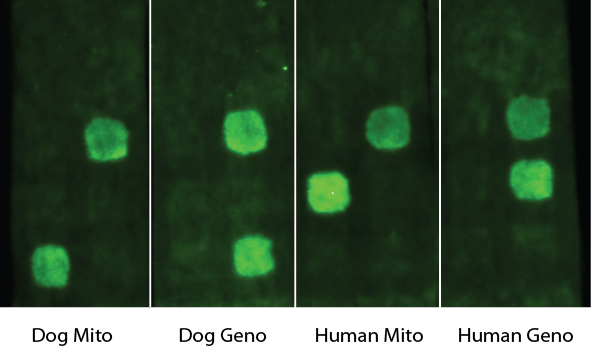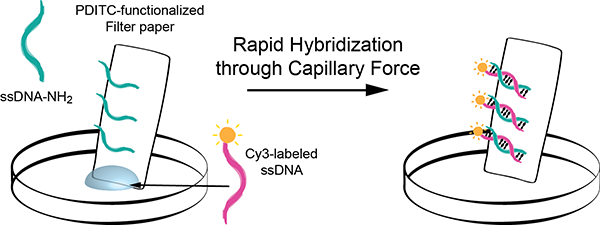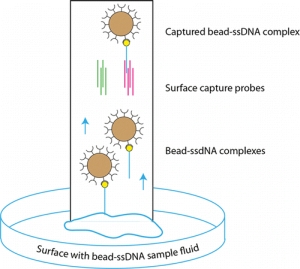Newsroom
Bio-active paper for DNA detection
Researchers in the Brumer lab at the MSL have developed a method to produce simple, low-cost DNA diagnostic devices from paper.
Since the first production of paper sheets from cellulosic plant fibers centuries ago, paper-based materials continue to be harnessed in a growing number of applications, motivated, in part, by a low-cost, high strength-to-weight ratio, and inherent resource renewability. Beyond traditional uses as a medium for writing and the graphic arts, paper and paperboard are used widely in advanced technical areas such as food packaging, barrier applications (e.g., disposable protective clothing, masks, and sheeting), and filtration. With a vision toward value-added applications, increasing attention is now being focused on the development of “bioactive paper,” that is, advanced, cellulose-based functional materials that have the capacity to bind, detect, and/or deactivate biological substances, ranging from small molecules, proteins, carbohydrates, and nucleic acids to whole organisms such as fungi, bacteria, and viruses. Indeed, there is a diversity of potential uses for bioactive papers, including environmental remediation, security applications, “smart” (i.e., indicator) packaging, pathogen filters, and not least, medical diagnostics.
The development of low-cost, accurate, and equipment-free diagnostic tests is crucial to many clinical, laboratory, and field applications, including forensics and medical diagnostics. Paper is an inexpensive, biodegradable, and renewable resource, the use of which confers several advantages compared to traditional materials such as glass. These paper test strips have broad applicability as rapid and specific diagnostics in real-life situations.



Online Reference: Harry Brumer